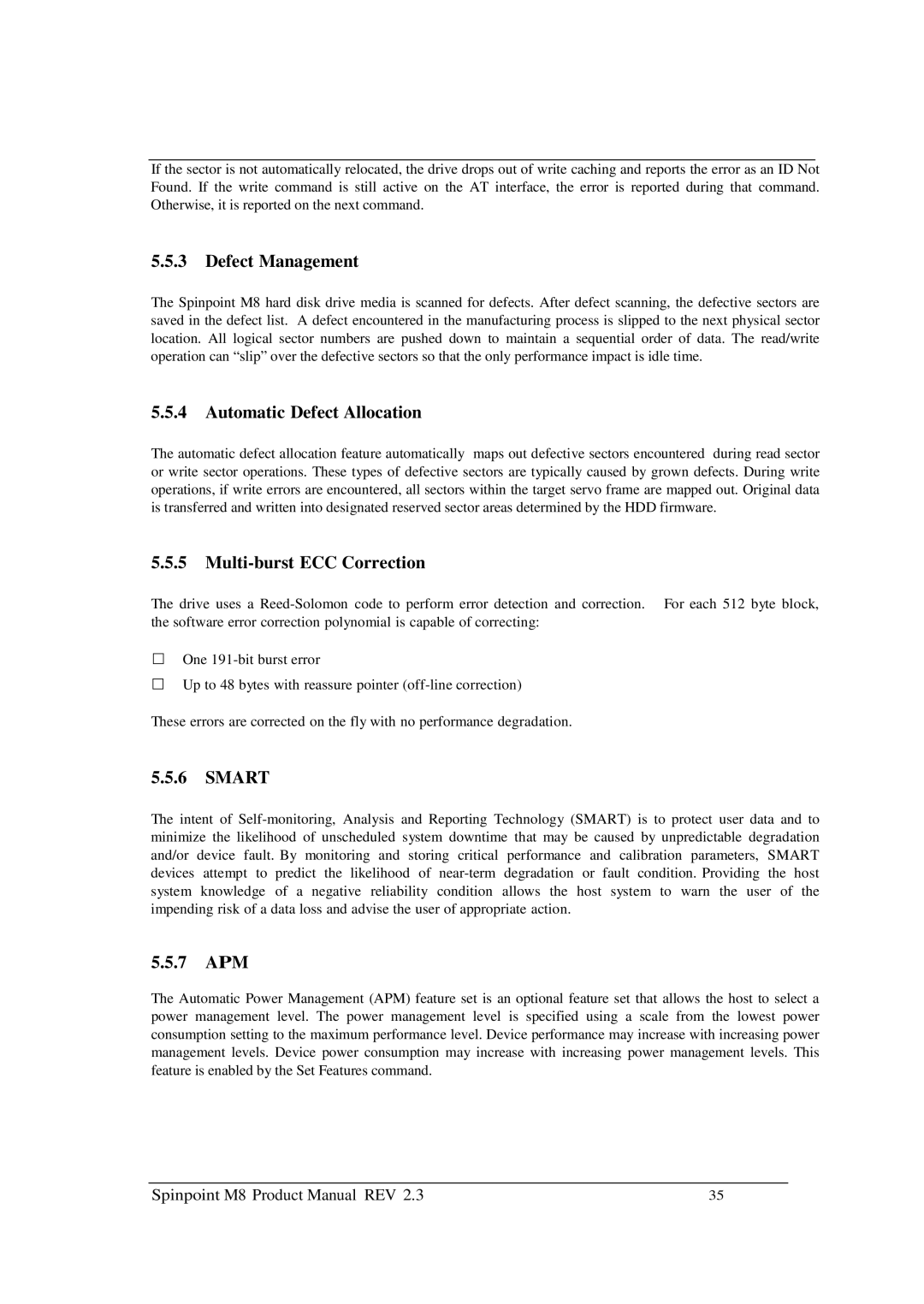If the sector is not automatically relocated, the drive drops out of write caching and reports the error as an ID Not Found. If the write command is still active on the AT interface, the error is reported during that command. Otherwise, it is reported on the next command.
5.5.3Defect Management
The Spinpoint M8 hard disk drive media is scanned for defects. After defect scanning, the defective sectors are saved in the defect list. A defect encountered in the manufacturing process is slipped to the next physical sector location. All logical sector numbers are pushed down to maintain a sequential order of data. The read/write operation can “slip” over the defective sectors so that the only performance impact is idle time.
5.5.4Automatic Defect Allocation
The automatic defect allocation feature automatically maps out defective sectors encountered during read sector or write sector operations. These types of defective sectors are typically caused by grown defects. During write operations, if write errors are encountered, all sectors within the target servo frame are mapped out. Original data is transferred and written into designated reserved sector areas determined by the HDD firmware.
5.5.5Multi-burst ECC Correction
The drive uses a
One
Up to 48 bytes with reassure pointer
These errors are corrected on the fly with no performance degradation.
5.5.6SMART
The intent of
5.5.7APM
The Automatic Power Management (APM) feature set is an optional feature set that allows the host to select a power management level. The power management level is specified using a scale from the lowest power consumption setting to the maximum performance level. Device performance may increase with increasing power management levels. Device power consumption may increase with increasing power management levels. This feature is enabled by the Set Features command.
Spinpoint M8 Product Manual REV 2.3 | 35 |
